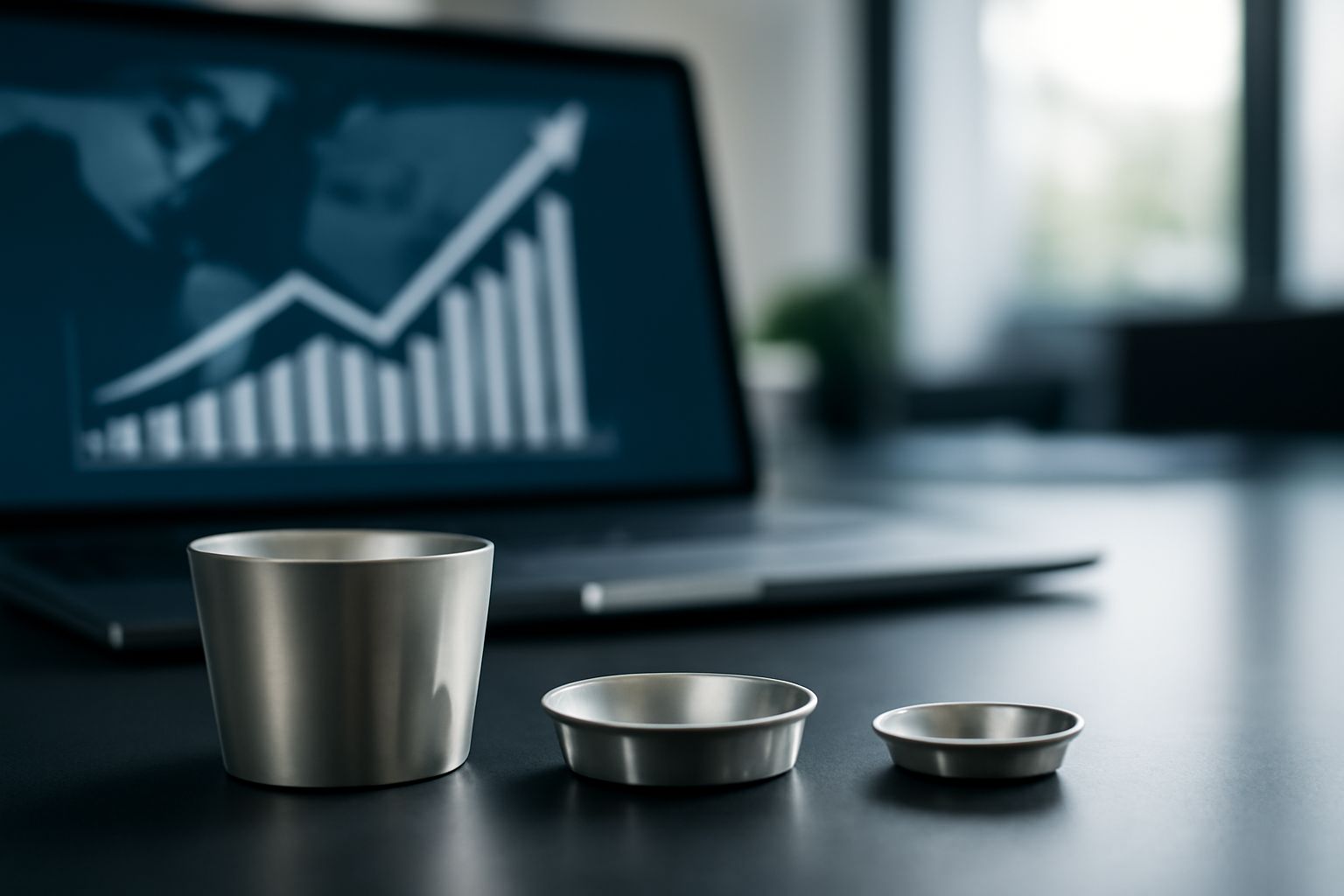Your cart is empty.
shop now
Your cart is empty.
shop now
Thermal analysis labs worldwide face challenges as demands shift. The right sample containers impact both data quality and cost more than ever before.
The global trend for thermal analysis sample containers is shaped by growth in material science and innovation in both container design and manufacturing. New materials and technology are helping labs achieve greater data reliability and testing speed with less waste and lower costs.

Over years in this sector, I have seen the market evolve fast. Innovative labs ask for better pans and crucibles with each new testing method. Growing regions and industries drive a shift toward higher performance, with industrialized countries setting new standards. Let us walk through these changes and see what shapes the future of thermal analysis containers.
Demand for sample containers grows as more materials need thermal testing. Old solutions no longer meet new research requirements.
Material science now leads growth in thermal analysis sample container usage. This sector drives the need for advanced pans and crucibles—every year adds new demands for compatibility, reliability, and precision.
Every time a new functional material or composite enters the market, labs run more DSC, TGA, and DMA tests. High purity metals or functional polymers each need special containers for valid results. According to the ASTM International database, industries like materials science, electronics, and pharmaceuticals now request more specialized consumables each year. Below is a table showing key market sectors and their impact on sample container demand.
| Sector | Main Use | Growth Impact | Preferred Container Feature |
|---|---|---|---|
| Materials Science | Analyze composites, alloys | High | High purity, custom shapes |
| Pharmaceutical | Drug stability, DSC studies | Medium | Hermetic sealing, traceability |
| Electronics | Test polymers, substrates | Medium | Heat resistance, automation |
| Chemicals | TGA, reaction studies | Medium | Chemical inertness |
| Aerospace | Study composites, heat shields | Low | High temp, custom alloys |
Container durability and data stability can make or break a test. Upgrades in the materials used answer these challenges directly.
New container materials such as platinum, alumina, and high purity aluminum have become more common. These options improve accuracy and lower contamination risk in sensitive thermal analysis procedures.
Material upgrades change how labs work. Years ago, most tests used standard aluminum pans. Today, high-stakes tests call for platinum or alumina pans for extreme temperature or reactivity. Many custom solutions now support precise manufacturing with micro-scale controls. Scientific reviews in ceramic engineering show that new container choices directly increase reproducibility and reduce noise. This table compares traditional and advanced container materials in key categories.
| Material | Max Temp (°C) | Stability | Common Use |
|---|---|---|---|
| Standard Aluminum | 600 | Medium | Routine DSC, TGA |
| High Purity Aluminum | 650 | High | Sensitive DSC, Pharma |
| Alumina | 1600 | Very High | High-temp, corrosive test |
| Platinum | 1650+ | Excellent | Research, specialty analysis |
Each region brings its own patterns for growth and consumption. Regulatory and supply chain realities shape buying choices.
The most important regions for thermal analysis container sales are North America, Europe, and East Asia. These markets demand higher quality, efficient distribution, and strict compliance with testing standards.
I find regional trends can surprise even experienced suppliers. For example, the United States prefers small batch, quick delivery, and seamless digital ordering. Germany and Japan review technical data in more detail before purchase. Cost is less important than reliability. According to R&D investment data from OECD, container demand grows fastest where industry and university testing overlap. The table below summarizes features shaping each region’s demand profile:
| Region | Key Market Driver | Preferred Container Type | Special Priority |
|---|---|---|---|
| North America | Speed, flexibility | Standard and sealed pans | Fast shipping, online service |
| Europe | Quality, compliance | High purity, platinum | Technical standards, documentation |
| East Asia | High volume, innovation | Custom, all material types | Automation, OEM partnership |
| Other Regions | Cost-sensitive | Basic aluminum | Bulk purchase |
Fast progress in analysis tools and data needs will keep shaping the sample container market. Labs prepare today for the tests of tomorrow.
The future of thermal analysis sample containers will focus on smart materials, integration with automation, and sustainability. Labs will see gains in speed, safety, and traceability.
I see strong movement toward sample containers that can work with automated handlers and provide traceable digital records. New coatings and micro-engineered features can further reduce baseline noise, supporting advanced analysis. According to a MarketsandMarkets report, demand for these advanced solutions will rise sharply, especially in regions with strong R&D focus. See this overview table for innovation trends shaping the next decade.
| Trend | Market Impact | Example Development | Potential Benefit |
|---|---|---|---|
| Smart labeling | High | RFID, QR code tracking | Traceability, error reduction |
| Eco-design | Medium | Recyclable pans | Lower waste, greener labs |
| Micro-fabrication | High | Precision engineered pans | Lowest signal noise |
| Automation-ready | High | Fit for robotic handlers | Higher throughput, less labor |
See also:Global Thermal Analysis Market Report
The market for thermal analysis sample containers is growing fast with new materials, better regional access, and smart innovations. Labs building for the future start with the right containers.
Contact REDTHERMO for market insights